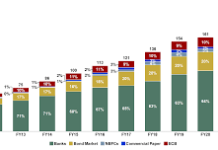The healthcare landscape is undergoing a major transformation, with value-based healthcare becoming a key focus. This shift prioritizes patient outcomes and cost-effective treatments rather than simply reimbursing for the volume of services provided.
The MedTech industry plays a crucial role in this transition, offering innovative solutions that improve both healthcare efficiency and patient care. As hospitals, clinics, and healthcare providers move toward value-based models, understanding the implications for the MedTech sector is more important than ever.
What is Value-Based Healthcare?
Value-based healthcare refers to a model where healthcare providers are reimbursed based on patient outcomes rather than the quantity of services rendered. The idea is simple: the focus should be on providing quality care that leads to better health outcomes at lower costs.
By rewarding providers for improving health and reducing unnecessary treatments, the value-based system aims to reduce inefficiencies and make healthcare more affordable for both patients and insurers.
This approach contrasts with the traditional fee-for-service model, which compensates providers for the volume of treatments and services delivered, regardless of their effectiveness.
The Role of MedTech in Value-Based Healthcare
The MedTech industry is transforming healthcare by enhancing diagnostic accuracy, treatment effectiveness, and care delivery. These innovations contribute to better patient outcomes at lower costs, offering personalized care and enhancing clinical outcomes and patient satisfaction.
Improving Patient Outcomes with MedTech
At the core of value-based healthcare is the goal of improving patient outcomes. This is where MedTech devices and solutions come into play.
For example, advanced diagnostic tools such as AI-powered imaging systems, wearable health devices, and remote monitoring technologies allow healthcare providers to detect issues early, personalize treatment plans, and closely monitor patients throughout their recovery journey.
Wearable devices that track vital signs, like heart rate, blood sugar, or oxygen levels, enable physicians to intervene before conditions worsen. Remote monitoring technologies also allow patients to receive care at home, reducing hospital admissions and improving recovery times.
Driving Healthcare Efficiency and Cost-Effective Treatments
MedTech solutions are not just enhancing patient care but also driving healthcare efficiency. Technologies like robotic surgery, which minimizes the need for traditional, invasive procedures, or telemedicine platforms that enable virtual consultations, are cutting down on unnecessary hospital visits and lowering treatment costs.
Moreover, MedTech innovations such as minimally invasive procedures and targeted therapies help reduce complications, shorten recovery times, and lower overall healthcare expenditures. By optimizing the effectiveness of treatments and minimizing the need for costly interventions, these technologies directly contribute to more cost-effective care.
The Financial Impact of Value-Based Healthcare on MedTech
The shift to value-based healthcare has significant implications for MedTech companies, as traditional reimbursement models prioritize volume over outcomes, potentially incentivizing unnecessary treatments. To succeed, companies must demonstrate the clinical effectiveness and cost savings of their products.
As MedTech innovations continue to evolve, the companies that can demonstrate clear, measurable improvements in patient health and cost-efficiency will be better positioned for success in the value-based healthcare landscape.
Healthcare Reimbursement and Value-Based Care
A critical factor in the adoption of value-based healthcare is the reimbursement structure. Traditionally, healthcare providers were paid based on the number of procedures or services performed, but in a value-based system, reimbursements are tied to the quality of care and patient outcomes.
MedTech companies must collaborate with healthcare providers to align their technologies with value-based care goals, ensuring their products not only enhance patient outcomes but also reduce healthcare costs. Products with a clear ROI that enhances both outcomes and efficiency will thrive in the evolving reimbursement environment.
The Challenges of Implementing Value-Based Healthcare
While the shift to value-based healthcare holds promise, its implementation is not without challenges. Healthcare providers must adjust to new models of care, including changes to payment systems and clinical workflows. For MedTech companies, the challenge lies in proving the long-term value of their products and securing reimbursement for their use in value-based care settings.
Additionally, aligning different stakeholders, such as insurance companies, healthcare providers, and MedTech firms, can be complex. Each party has its own interests and priorities, which can slow the adoption of value-based models.
The Future of MedTech and Value-Based Healthcare
As value-based healthcare continues to gain traction, MedTech will be a crucial driver in shaping the future of the healthcare system. With innovations that focus on precision, personalized care, and improved patient outcomes, the MedTech industry is well-positioned to support the shift away from fee-for-service models.
Healthcare providers and MedTech companies are expected to collaborate in the coming years to develop integrated solutions for better outcomes and lower costs. As data-driven decision-making becomes more prevalent, analytics and predictive models will play a crucial role in value-based care.
MedTech Trends to Watch in the Value-Based Healthcare Era
Several MedTech trends are emerging as part of the shift to value-based care:
- AI and Machine Learning: These technologies are enhancing diagnostics, treatment planning, and patient monitoring, all of which contribute to improved outcomes and efficiency.
- Wearables and Remote Monitoring: These tools provide continuous data about patient health, allowing for early intervention and personalized care that aligns with value-based principles.
- Robotic Surgery: By offering minimally invasive options, robotic surgery reduces recovery times, lowers costs, and improves patient outcomes.
- Data Analytics and Predictive Models: These technologies help providers make better decisions about treatment options and improve patient care, all while reducing costs.
- Telemedicine: Virtual consultations and remote care options are increasingly integrated into the value-based care model, enabling healthcare providers to extend care beyond the office and reduce the need for in-person visits.
Conclusion
The healthcare industry is transitioning towards value-based care, with MedTech innovations playing a crucial role. These innovations focus on patient outcomes, cost-effective treatments, and healthcare efficiency, enabling better, more affordable care. Aligning MedTech solutions with value-based care models is essential for sustainable improvements in healthcare delivery and patient outcomes.
I hope you find the above content helpful. For more such informative content, please visit Medtechreporter.











